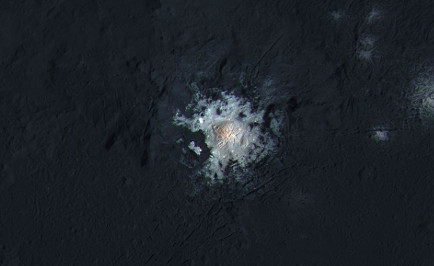Medusa (MT-2373)
Created by Captain Mrazak on Thu May 17th, 2018 @ 6:57pm
Code Name: Medusa
Classification: Megalithic Life-form
 Long-Range Scan
Long-Range Scan
Initial Discovery Date: October 16, 2378
Initial Discovery Location: 56 Stygian-a, Stygian Traverse (Gamma Quadrant)
Subsequent Discoveries: N/A
Description: MT-2373 is deeply embedded within the planetary crust of an unnamed Class G world, 56 Stygian's sole terrestrial planet. Long-range sensors indicate intense kinoplasmic radiation emission from a large crater in the mountain range of the planet's southern hemisphere. A broadband spectral analysis revealed a life-form the size of a Class D planetoid which was comprised of an unclassified mineral compound. The undulating oscillation of the kinoplasmic bursts suggests sentient communication.
 Broadband Spectral Analysis
Broadband Spectral Analysis
Lab/Field Notes: Further analysis revealed complex oligosaccharide chains whose aminos translate directly into monosaccharides instead of proteins. It is therefore hypothesized that this inorganic cluster controls the kinoplasmic radiation through biochemical piezoelectric chain reactions within the surrounding geological strata. To date any probe or vessel which has come within sensor range of the planet's magnetosphere was rendered inoperational, as kinoplasmic radiation is immensely disruptive to computer systems.
Addenda:
(1) The USS Icarus was dispatched to collect the deactivated long-range probe in the 56 Stygian system. Before the ship was lost with all hands, its crew claimed to have conducted first contact through translating kinoplasmic modulations from the entity. Only one word was retrieved from the subspace broadband transmission: "SILENCE."
(2) Due to its extreme hazards and the remote location of its home star beyond the Finnean Convergence Zone, MT-2373 is unable to be studied further at this time. A general advisory of extreme kinoplasmic radiation has been posted outside the system until such time as study can be resumed.
(3) In September 2389, several vaults were discovered beneath the surface of Sol II (Venus) which contained relics of an ancient colony from an unidentified extinct civilization. A remnant Artificial Intelligence construct repaired itself by bootstrapping with the local Venusian computer network. Upon contact, the AI gave warning about the return of an immensely powerful megalithic lifeform whose description partly matched with MT-2373. Before the AI was forcibly destroyed due to its devastating network intrusions (suspected to be the cause of the destruction of Spacedock One), the AI blamed the lifeform it designated "Abad'ashar" or "The Terror" for the cataclysms on Venus. The Memory Theta field team destroyed the Abad'ashar lifeform (via a solar diffuser retasked as a massive solar laser) before it could be studied for analytical comparison to MT-2373, but the similarities could not be denied.
Categories: Theta Level Threats